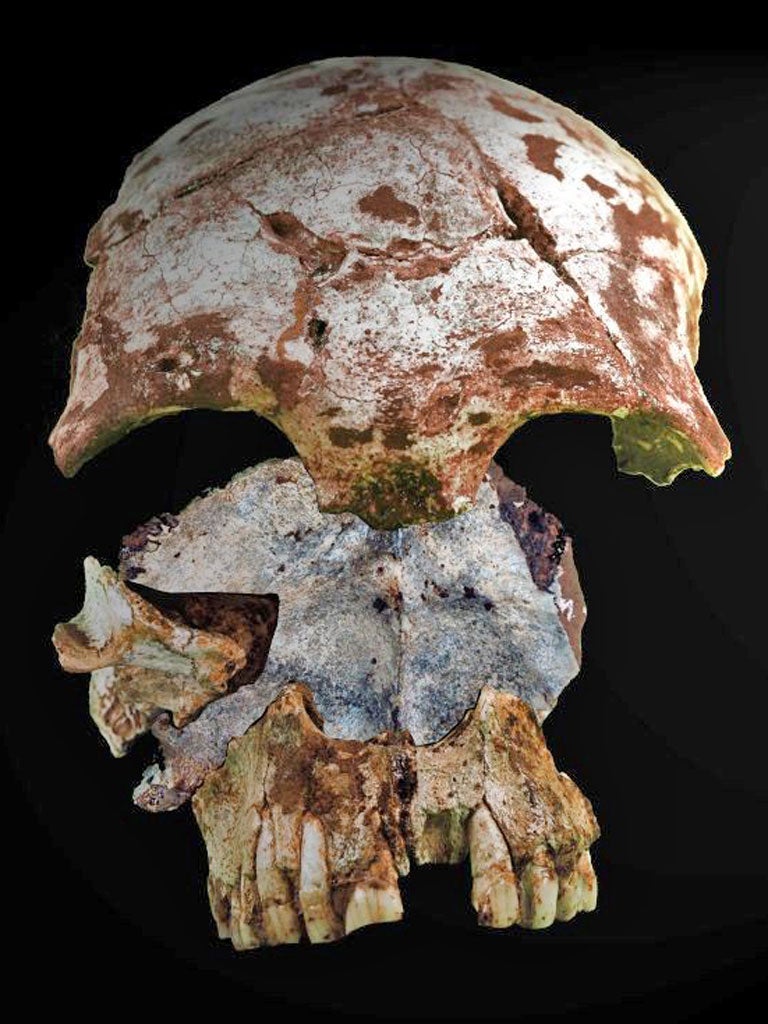Skull shows early man's epic journey to Asia
It's 46,000 years old – but bears evidence humans were colonists from the start

Your support helps us to tell the story
From reproductive rights to climate change to Big Tech, The Independent is on the ground when the story is developing. Whether it's investigating the financials of Elon Musk's pro-Trump PAC or producing our latest documentary, 'The A Word', which shines a light on the American women fighting for reproductive rights, we know how important it is to parse out the facts from the messaging.
At such a critical moment in US history, we need reporters on the ground. Your donation allows us to keep sending journalists to speak to both sides of the story.
The Independent is trusted by Americans across the entire political spectrum. And unlike many other quality news outlets, we choose not to lock Americans out of our reporting and analysis with paywalls. We believe quality journalism should be available to everyone, paid for by those who can afford it.
Your support makes all the difference.Scientists have unearthed the ancient skull of an anatomically-modern human from a jungle cave site in Laos, which they believe is the oldest known skeletal evidence of Homo sapiens in Asia.
The skull has been dated to between 46,000 and 63,000 years old – at least 20,000 years older than the previous oldest fossil remnants of modern man in south-east Asia, suggesting that early humans successfully colonised distant parts of the world relatively soon after leaving Africa.
The partially preserved skull includes the upper part of the brain case as well as jaw bone and teeth, which have the distinct anatomical characteristics of modern Homo sapiens such as high forehead, small brow-ridge and small front teeth, the scientists said.
Anthropologists found the skull while excavating the Tam Pa Ling cave on the side of the Pa Hang Mountain, which forms part of the Annamite mountain range of northern Laos, between Vietnam and Thailand. Discovering such ancient remains of modern humans so far inland suggests that the first people to migrate from our African homeland explored far away from the suggested migratory routes that followed the coastline.
Previous genetic studies have suggested that modern humans must have migrated across South East Asia at least 60,000 years ago but this is the first fossil evidence to support this DNA data, said Laura Shackelford of the University of Illinois at Urbana-Champaign, who led the study published in the journal Proceedings of the National Academy of Sciences.
"It's a particularly old modern human fossil and it's also a particularly old modern human for that region," Dr Shackelford said. Other fossil bones of modern Homo sapiens have been found in China or other parts of South East Asia, but they have either not been accurately dated or they do not contain unequivocal features of modern humans, she added.
"This skull is very well dated and shows very conclusive modern human features… [it] would have looked just like us, although this individual was very small relative to recent humans," Dr Shackelford said.
"It is very hard to say much of anything about the food that they ate because the teeth are very worn down. This is a relatively young adult individual so the diet most likely included tough foods to have worn the teeth to such a great degree."
The earliest evidence of modern H. sapiens outside Africa are fossils from the Levant region of the Middle East dated to between 80,000 and 100,000 years ago.
Professor Chris Stringer, head of human origins at the Natural History Museum in London, said the skull was important because it shows that modern humans had colonised Asia at least 50,000 years ago. "It thus confirms the expectation from DNA studies that modern humans were in south-east Asia by 50,000 years ago, since they arrived in New Guinea and Australia only a few thousand years later," he said.
Join our commenting forum
Join thought-provoking conversations, follow other Independent readers and see their replies
Comments